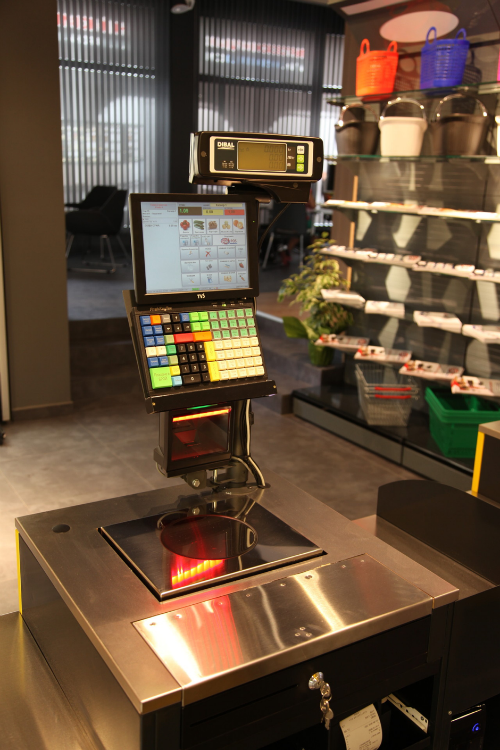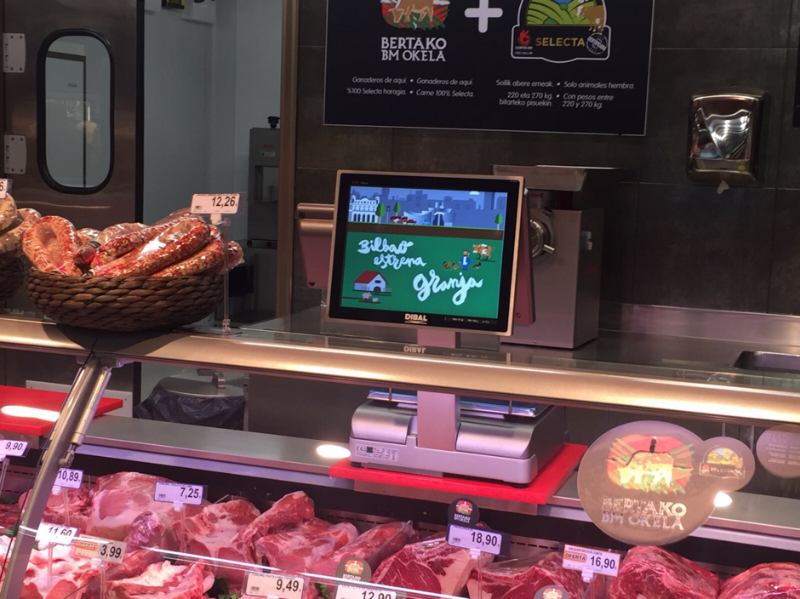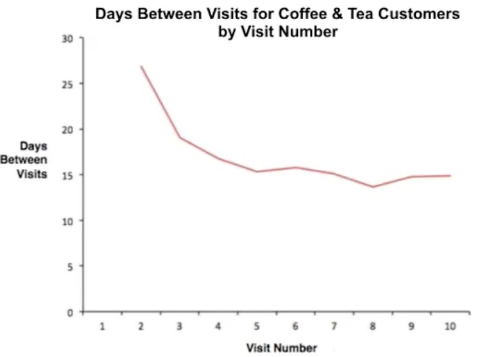Smart stores, omni-channel analytics and endless loyalty: 6 retail trends in 2017

The behavior of customers is changing rapidly, technology does not stand still, and therefore retailers are forced to follow the trends and follow them in order to stay afloat.
We talk about what trends are emerging in the Russian and foreign retail trade, why they are interesting and why they should be paid attention to the owners of both ordinary and online stores.
')
CRM-based marketing and recommendations
It is more profitable for retailers to retain the current customer than to attract a new one. At the same time, customers increasingly value an individual approach, so in the near future, stores will focus on personalized communications. How will this work?
Imagine that a girl walks through a shopping center and passes by a store where she bought a dress last month. At this moment, she comes to the phone with an offer to add a wardrobe with shoes that match the style of the previous purchase. Looks good, huh? But to implement this idea, retailers will have to improve their work with recommendations.
This trend follows directly from the previous one and contributes to increased customer loyalty and pre-sales. Recommendations can be used in almost all retail segments, even in grocery. For example, when a customer weights potatoes on a self-service scale, the device can give him not only a label with the weight and price of the product, but also a recommendation with a recipe for a dish that can be prepared on the basis of potatoes.
The described mechanics are a good way to increase the store's revenue, because if a potato buyer likes the recipe for "baked potatoes with chicken", then he will have to buy more chicken and the necessary spices.

Another type of pre-sale is most typical for online stores. These are the recommendations for the acquisition of related products. They work well, because a client who has already decided to pay for one product is much easier to convince of the need to purchase an additional one than of a person who, in principle, is still considering the need for a purchase.
But there is a certain complexity here - recommendation systems often offer goods to the buyer that are practically unrelated to its purchase. For example, Forbes sees a way out in teaching algorithms to formulate recommendations based on unusual, non-primary properties of goods.
How it works? The system monitors the user's behavior, sees which products he chooses, finds something in common between them and issues recommendations based on this unifying feature. But the algorithm may not understand that three items of clothing and several accessories are united by some minor detail, for example, an animal print. Therefore, Nikki calls for improved image recognition ability.
In addition, in her opinion, it is not enough to understand the behavior of buyers. It is also necessary to understand the context. In other words, what worked the previous time will not necessarily work for the same buyer in the future. In a word, it is definitely worth working on the implementation of recommendations, and it is necessary to make such systems “smarter”.
Smart Shop
Smart trade is an important trend in the world and on the Russian market. Equipment in modern Russian stores is a single system. In addition, each retailer seeks to enter the equipment it purchases into the existing infrastructure so as to get the maximum benefit from the investment.
One example of such “smart” equipment is scales, integrated with electronic price tags. When packaging a weighted product, they display its value immediately on the shop window. Another example is also related to weights: using trade weights with built-in screens allows not only to solve the problem of weighing goods by customers, but also to use them as marketing tools during idle moments, showing store advertising or information about ongoing promotions on the display.

Smart smart counters using RFID technology, iBeacon, electronic price tags and self-service cash registers can be attributed to the same trend. They allow you to track the movement of customers in the store and create a "heat map". Based on this data, the retailer can make an effective display of goods, plan marketing campaigns, optimize customer flows.
Infinite loyalty
The development of loyalty systems is one of the most popular trends. It is difficult to imagine a store that does not work with a discount or bonus system. This is especially true of the non-food segment: for such retailers, this is probably the only effective opportunity to fight with competitors for the loyalty of customers.

Company statistics Fivestars says that coffee house customers visit places more often if they provide them with loyalty programs.
A separate branch of this trend is mobile app stores. It would seem that today there are already so many of them that a person will not burden himself with another one. However, as practice shows, everything depends on the bonuses that the retailer is ready to offer the customer. In addition, the application eliminates the need for customers to constantly carry annoying plastic cards with them, and retailers may not spend money on their release and replacement.
Retailers are working to increase loyalty in other ways - for example, struggling with queues at peak hours. To speed up customer service, special applications can be used - with their help, an employee is able to bypass customers in a queue and scan products in their shopping carts. This data can be synchronized with the cash program, as a result, when the client comes to the cash register, he will only have to pay for the purchase without putting the goods on tape. Thus, the queues in the store are moving fast, and customer loyalty to the retailer is growing.
Self catering
This trend is not new, but the unstable economic situation in Russia does not give him the opportunity to turn around in domestic retail in full force. Nevertheless, many stores still come to realize the need to implement self-service systems.

These devices allow you to save retail space, as well as increase customer loyalty. For example, two classic cash desks can be replaced by four or even six self-service devices. They will be most relevant during peak hours: according to statistics, six self-service cash registers replace three to four cashiers.
In addition, Russian retailers appreciated other advantages of self-service systems, including, for example, a decrease in fraud cases from staff. If the store has a system in which the cashier only helps the buyer to scan purchases, and he pays for them himself, the money does not fall into the hands of the employee - this kills any attempts at deception in the bud.
Intelligent staff control
Another trend contributing to greater retailer performance is the use of specialized employee controls. For this, companies are implementing Mobile Workforce Management (MWM) systems. After installing such a solution, the director or administrator will no longer have to look for an employee to assign him a task.
Instead, tasks are assigned to the right people using a special interface - in the program the manager can give the task to merchandisers to check or post new goods, to sellers to notify buyers about the new promotion, and to loaders to accept or load the products. At the data collection terminals (TSD) employees will receive a notification of new tasks - in response, they will be able to send confirmation that they have received the task and have begun work on it, as well as signal its completion.
In addition, in large stores the problem of controlling the movement of employees. With a Wi-Fi network, you can implement a real-time positioning system (RTLS). It is capable, with an accuracy of up to 3-5 meters, to show where one or another employee is located - or rather, his TSD. With the “lined” boundaries of the work areas, when an employee leaves the area for a long time, a warning will appear on the display of the point of sale administrator.
Data collection terminals are also useful for monitoring the integrity of the security service. Situations where employees simply do not make regular rounds, although they should. If at the key point of the route of such a detour to place control barcodes and oblige the guards to read the mx terminal during the detour, then cheating will not work - the system will know that instead of the two required detours, it was done less overnight.
Analytics
The ability of retailers to comprehensively analyze the business and use the data to improve performance is what will enable them to become leaders in 2017. Retailers who will start using the so-called omnichannel analytics, that is, take data from disparate channels and add them to some common the picture. It includes an analysis of the trading zone in online and offline formats, an analysis of behavior, customer movements, and a complete picture of the product.
Why omnikanalnaya analyst was the trend right now? In 2016, many traditional retailers introduced delivery services and the “ordered online - take offline” scheme. The trouble is that they do not yet understand all the advantages and disadvantages of such a solution. On the other hand, cognitive computing, a combination of artificial intelligence, natural language processing and self-learning networks, has been actively used in technological solutions created for retail.
These two factors account for the growing potential of omni-channel analytics. First, it allows you to collect a lot of data from different places. Secondly, retailers do not understand how the behavioral data coming from the Internet is related to the stock and sales information that they have been used to dealing with for decades. On-channel analytics can solve this problem and show retailers exactly how the relationship between online and offline stores is built.
But keep in mind that omni-channel analytics are complex data with results that few people understand well enough to interpret them. Therefore, at first, mistakes when working with it cannot be avoided.
In general, some of the trends listed in the article still seem to be something from the distant future, but retailers need to think about how to incorporate them into their activities now. But others, such as “smart” shop, endless loyalty or an individual approach, are realizable today. Be that as it may, if a retailer watches the trends emerging in the trade and approaches with the mind to their introduction in the store, this effectively affects his business and will allow him to win in the competition.
Future: total automation
Current trends clearly demonstrate the benefits of automation. Therefore, we should expect further penetration of technologies into the retail sector. In addition, there are already examples of innovations that show exactly how stores of the near future can look.
One of these projects is the “ beta store ” of the company Hointer, which appeared several years ago. He specialized in men's clothing, but his main feature was the integration of mobile applications into the standard buying process. Such a move at the time made a lot of noise, which is not surprising, because Hointer completely rethought the experience of retail.
The retailer suggested that buyers should not type things on their own for fitting - instead, it was only necessary to scan the QR code on the label of the thing they liked using the application, and by the time the buyer reaches the fitting room, she will already be there. Already in the fitting room through the application, you can order a thing of another size, and it will be delivered by a robot through a special hole in the wall.
This, among other things, allowed the store to save on retail space - in the hall it was not necessary to display a set of identical goods of different sizes, information about available sizes was displayed in the application, and the necessary thing was delivered immediately to the fitting room.

Image: Wired
The growing popularity of online shopping and the outflow of shoppers from traditional stores are affecting how offline sales points are transformed.
An example of an attempt to make a traditional store as convenient as an e-commerce site is the Amazon Go project, which has no cash desks or queues. Buyers simply go inside and add products to the shopping list, pointing the phone with a special application on them. When you exit the store the amount of purchases is simply removed from their account.

Of course, in the next few years, fully automated stores will not supplant traditional ones, but every year new technologies will increasingly change the way we make purchases. Trading will become more intelligent and efficient, both for retailers and buyers, and this is the main good news.
Source: https://habr.com/ru/post/335174/
All Articles